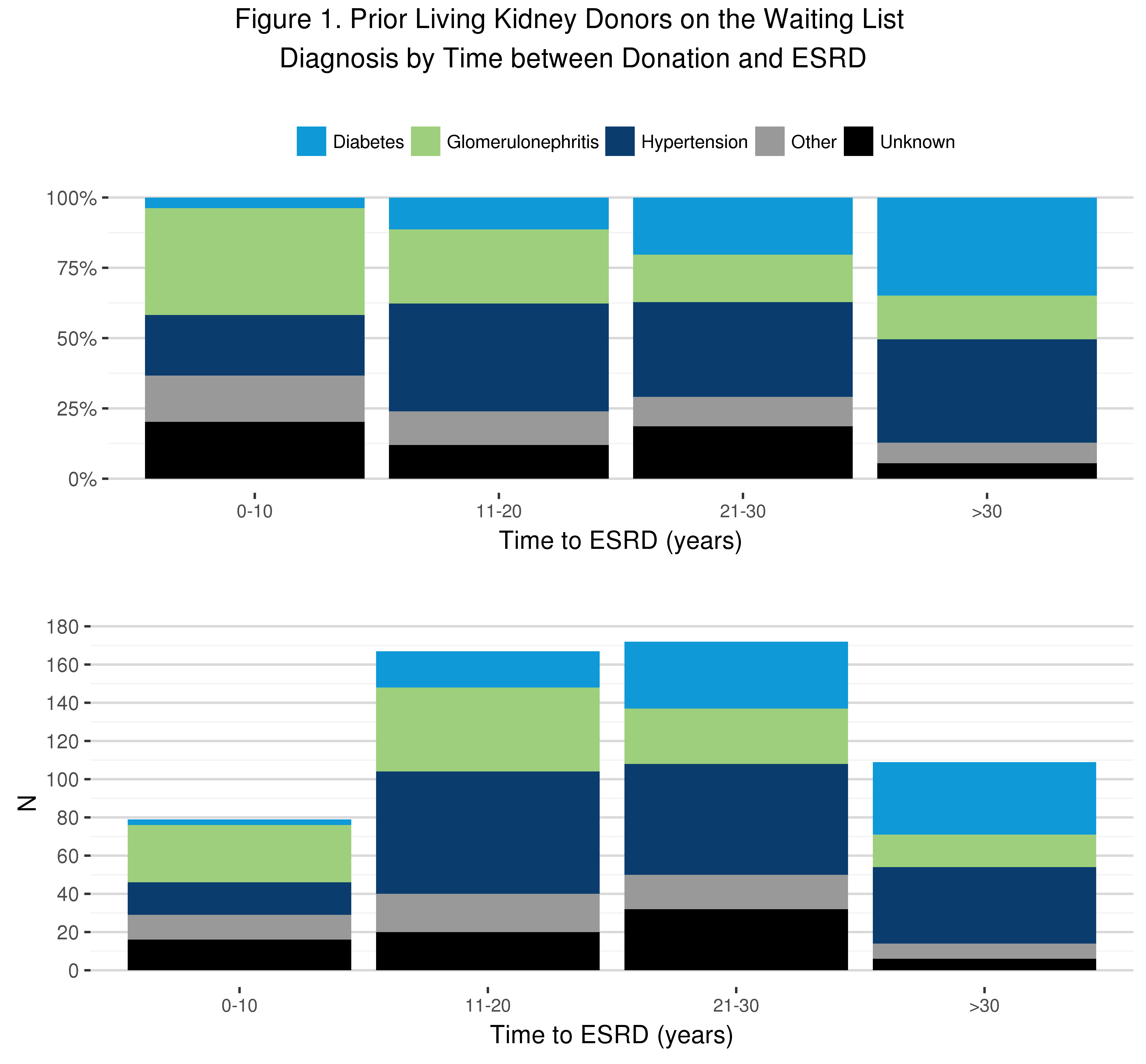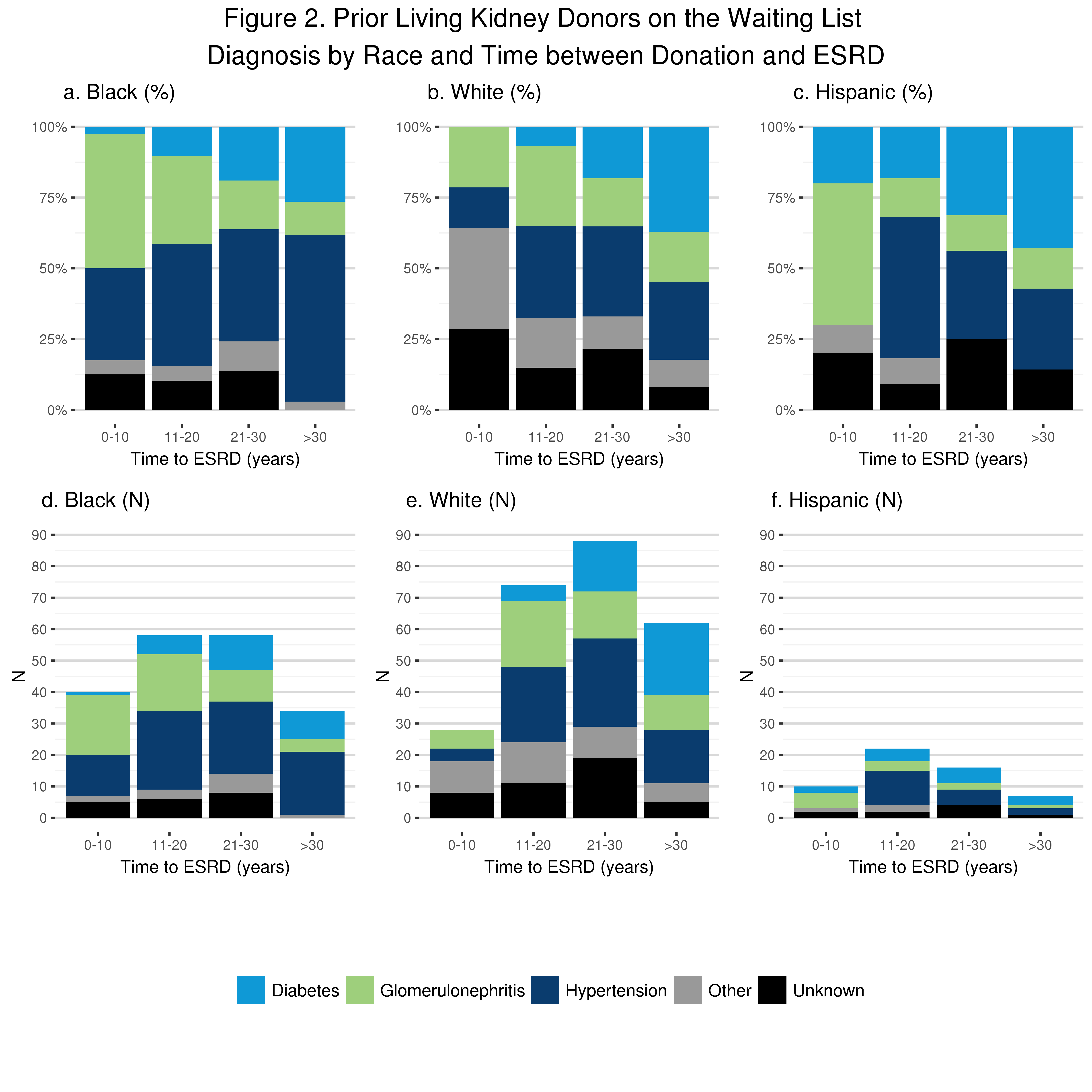Racial Variation in ESRD Diagnosis Patterns among Prior Living Kidney Donors on the OPTN Kidney Waiting List
1Research, UNOS, Richmond, VA, 2Office of the Chief Medical Officer, UNOS, Richmond, VA, 3Organ Center, UNOS, Richmond, VA
Meeting: 2019 American Transplant Congress
Abstract number: 448
Keywords: Donation, Kidney, Outcome, Renal failure
Session Information
Session Name: Concurrent Session: Kidney Living Donor: Long Term Outcomes
Session Type: Concurrent Session
Date: Tuesday, June 4, 2019
Session Time: 2:30pm-4:00pm
 Presentation Time: 3:06pm-3:18pm
Presentation Time: 3:06pm-3:18pm
Location: Room 304
*Purpose: We studied End Stage Renal Disease diagnosis patterns among prior living kidney donors (PLDs) who received candidate PLD priority on the OPTN kidney waiting list.
*Methods: Transplant programs submit information – including donation date and relationship to recipient – to the OPTN to obtain PLD priority for PLD kidney candidates. We created a novel dataset to study ESRD diagnosis patterns among PLDs on the waiting list 9/1/96-1/31/18; our cohort included 527 PLDs who donated between 1963 and 2011.
*Results: Median donation age was 32 years (IQR:25-40), median age at ESRD onset was 54.8 years (IQR:45.9-63.1), and median time to ESRD onset was 20.8 years (IQR:12.9-28.5). Overall, the most frequent diagnosis was hypertension (33.8%), followed by glomerulonephritis (23.0%), diabetes (17.9%), other diagnoses (11.3%), and unknown (14.0%). Diabetes was most common among Hispanic (25.5%) and other race (33.3%) PLDs, compared with white (17.4%) and black (14.2%). Hypertension and glomerulonephritis were most common among black PLDs (42.6% and 26.8%, respectively). Among PLDs reaching ESRD <10 years post-donation, the most common diagnosis was glomerulonephritis (38.0%). Hypertension was the most common diagnosis 10-20 and 20-30 years post-donation (38.1% and 33.7%, respectively), while the most common diagnoses 30-40 years post-donation were diabetes (37.6%) and hypertension (35.5%). Diagnosis patterns over time since donation varied by race; black and Hispanic PLDs had more glomerulonephritis in the first decade than white PLDs, who had more other diagnoses. For all groups, glomerulonephritis decreased and diabetes increased over time post-donation, but hypertension was substantial in later decades for black PLDs. Time to ESRD diagnosis patterns did not vary by donation year.
*Conclusions: These findings shed light on racial variation in underlying etiologies of ESRD among PLDs.
To cite this abstract in AMA style:
Wainright J, Robinson A, Wilk A, Klassen D, Cherikh W, Custer C, Brown R, Stewart D. Racial Variation in ESRD Diagnosis Patterns among Prior Living Kidney Donors on the OPTN Kidney Waiting List [abstract]. Am J Transplant. 2019; 19 (suppl 3). https://atcmeetingabstracts.com/abstract/racial-variation-in-esrd-diagnosis-patterns-among-prior-living-kidney-donors-on-the-optn-kidney-waiting-list/. Accessed December 17, 2025.« Back to 2019 American Transplant Congress


